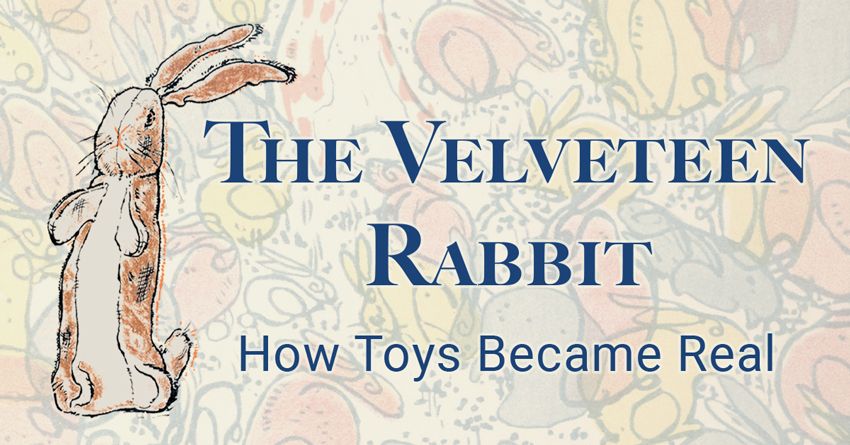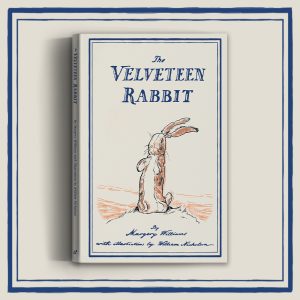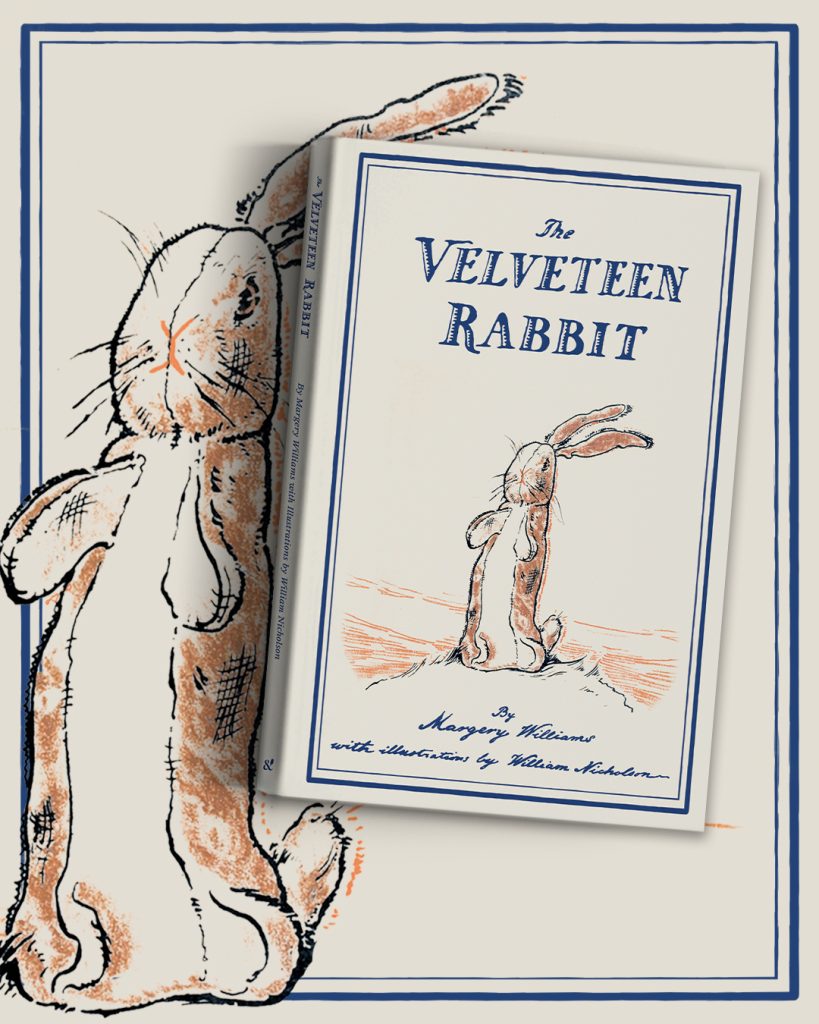A charming tale of self-acceptance, love, loss, and magic, The Velveteen Rabbit is one of the most enduring children’s stories in literary history.
Originally published in Harper’s Bazaar in 1921, Margery Williams‘ wonderful children’s story delves into what it truly means to be ‘Real’, revealing that what matters most in life is to love and be loved in return. Delve into this beautiful volume as we explore the rich history of The Velveteen Rabbit.
A charming tale with themes of self-acceptance, love, loss, and magic, The Velveteen Rabbit is one of the most enduring children’s stories in literary history.
‘Once you are Real you can’t become unreal again. It lasts for always.’
The Velveteen Rabbit, Margery Williams
Themes, Messages, and Morals in The Velveteen Rabbit
Covering vital subjects for young readers, Williams doesn’t hesitate to address topics such as learning how to deal with emotions, growing up to be strong and resilient, and developing positive relationships. Despite exploring many themes, like friendship, sadness, and childhood, the overriding message in The Velveteen Rabbit is one of love.
Blanketed in a fantastical analogy of personified toys and an exciting playroom, The Velveteen Rabbit is a thoughtful tale that captures children’s imagination, wonder, and infinite love. Exploring what it truly means to be ‘Real’, the story takes its readers on a journey of unconditional friendship and self-acceptance.
The velveteen rabbit is new in the nursery and, despite him feeling shabbier than the other toys, the little boy loves him very much. But when the child falls dangerously ill, the pair’s bond is put to the test. This bittersweet story addresses important aspects of growing up and is the perfect read for every young mind.
6 Inspiring Life Lessons in The Velveteen Rabbit
Explore the meaning and morals of one of the most enduring children’s stories of all time.
Read the BlogThe fantastical story highlights the importance of vulnerability, gently teaching children to embrace sadness and loss as part of what makes us human or ‘Real’. Williams experienced the passing of her father at an early stage in life, and that grief permeates her writing. In The Bookman magazine in 1925, she disclosed that ‘it is the sadness which is inseparable from life, which has to do with growth and change and impermanence, and with the very essence of beauty.’
The powerful moral of this tale is that true value comes from love.
‘”Real isn’t how you are made,” said the Skin Horse. “It’s a thing that happens to you. When a child loves you for a long, long time, not just to play with, but REALLY loves you, then you become real.”‘
-The Velveteen Rabbit, Margery Williams
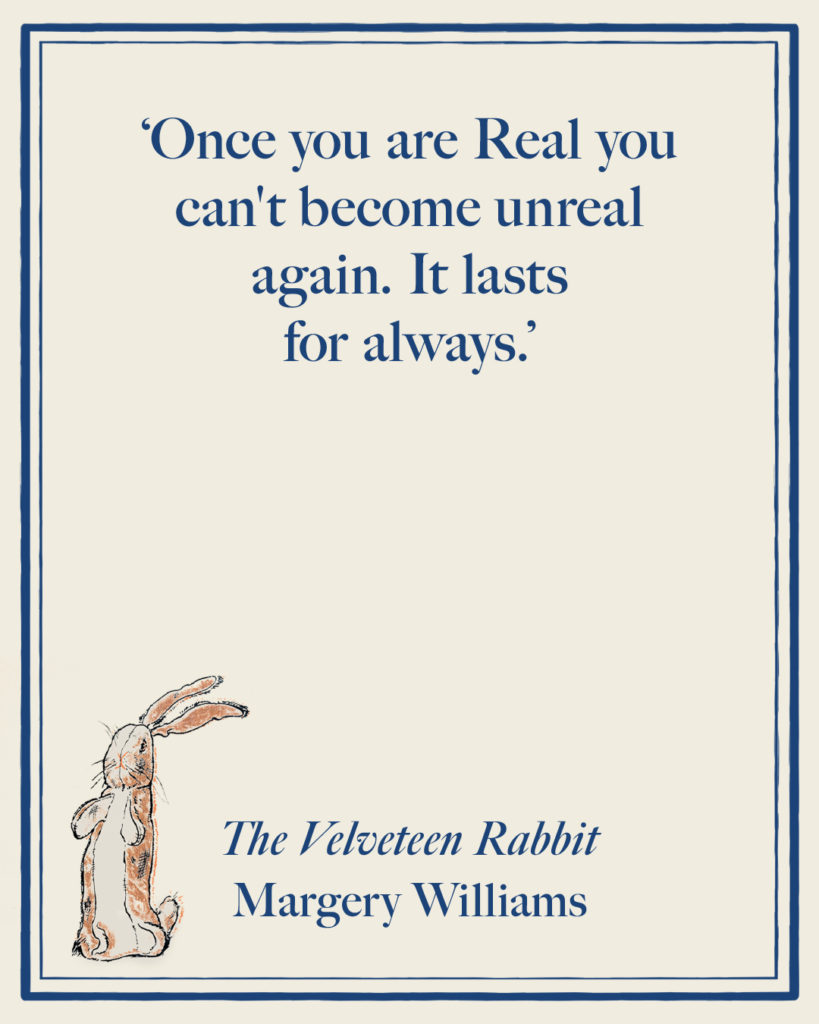
About the Author – Where It All Began
Margery Williams Bianco was born on 22nd July 1881 in London to Robert and Florence Harper Williams. The family moved to New York, USA, in 1890, before settling on a farm in Pennsylvania. When Williams was just seven, her father passed away. She carried his literary influence her entire life, often recalling that it was his devotion and love of reading that inspired her to write from a young age.
Returning to London alone in 1901, Williams tried to pursue a career as an author, but her first novels were unsuccessful. While at her publisher’s office, Williams met her future husband, Francesco Bianco. The pair married in 1904, and together they had two children. Temporarily setting aside her writing aspirations, she focused on raising her young family.
The family moved to Greenwich Village, USA, in 1921, and Williams gained a new spark of inspiration. After studying the work of English poet Walter de la Mare, who believed that a childlike imagination grants a creative and intuitive view of life, she began to write with a new audience of children in mind.
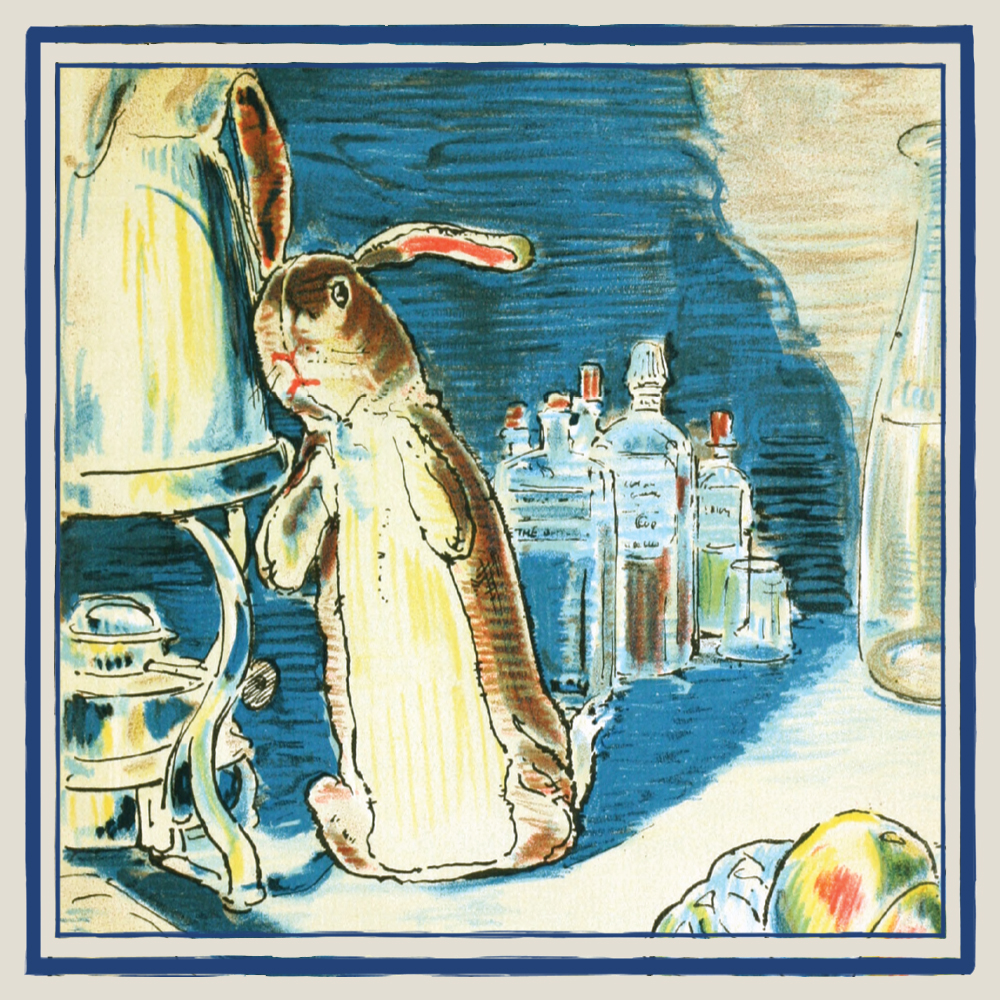
The Velveteen Rabbit; or, How Toys Become Real was Williams’ first children’s book, and it was an instant success. She continued to write for children, often featuring personified toys and anthropomorphised animals in her work. The stories’ uplifting endings always outweigh the melancholy lingering in the narratives, and her books successfully marry the magic of childlike imagination with the realism of life.
‘For a small child’s solid comfort, few things can surpass The Velveteen Rabbit by Margery Williams.’
– The Forum, 1926
Towards the end of her career, Williams wrote for young adults as well as children. With the commencement of the Second World War, she also began to write wartime novels of heroism and bravery.
On 4th September 1944, after spending three days in a hospital in New York, she passed away aged 63. Williams died the author of over 25 children’s books and novels, with The Velveteen Rabbit remaining her most-cherished work.
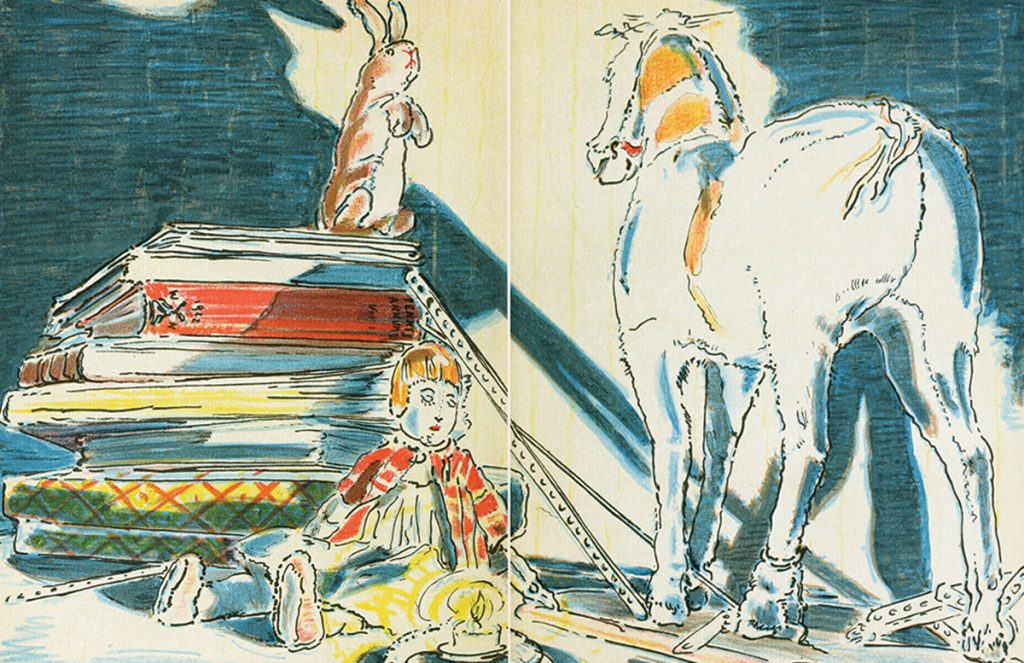
The Original Illustrators of The Velveteen Rabbit
The Velveteen Rabbit is a short but beautiful narrative that has been treasured for over a century. The magical tale is accompanied by William Nicholson’s original artwork, but he wasn’t the first artist to breathe life into the loveable bunny.
Williams’ daughter, Pamela Bianco, illustrated the original story when it was first in print. She was seen as a child prodigy. From the age of 11, Bianco’s art was featured in major European and American galleries. She illustrated more of her mother’s work, including The Little Wooden Doll (1925) and The Skin Horse (1927). Despite her early successes, sadness followed Pamela throughout her life, and her childhood fame accelerated the depression that saw her hospitalised as an adult.
‘Once you are Real you can’t be ugly, except to people who don’t understand.’
– The Velveteen Rabbit, Margery Williams
When The Velveteen Rabbit was later published as a book in 1922, it was accompanied by delicate colour illustrations by Sir William Nicholson, who, at the time, was a renowned English artist. A pupil of the famous portraitist Sir William Beechey, Nicholson was briefly a student at both Hubert Bon Herkomer’s art school in Hertfordshire and the Academie Julian in Paris. His understanding, compassion, and empathy for children assisted him in the production of many fine works of charming children’s illustrations and artwork. As well as bringing Williams’ much-loved story to life, Nicholson also wrote and illustrated his own children’s book, The Pirate Twins, published in 1929. The talented artist received a knighthood in 1936 for his phenomenal work.
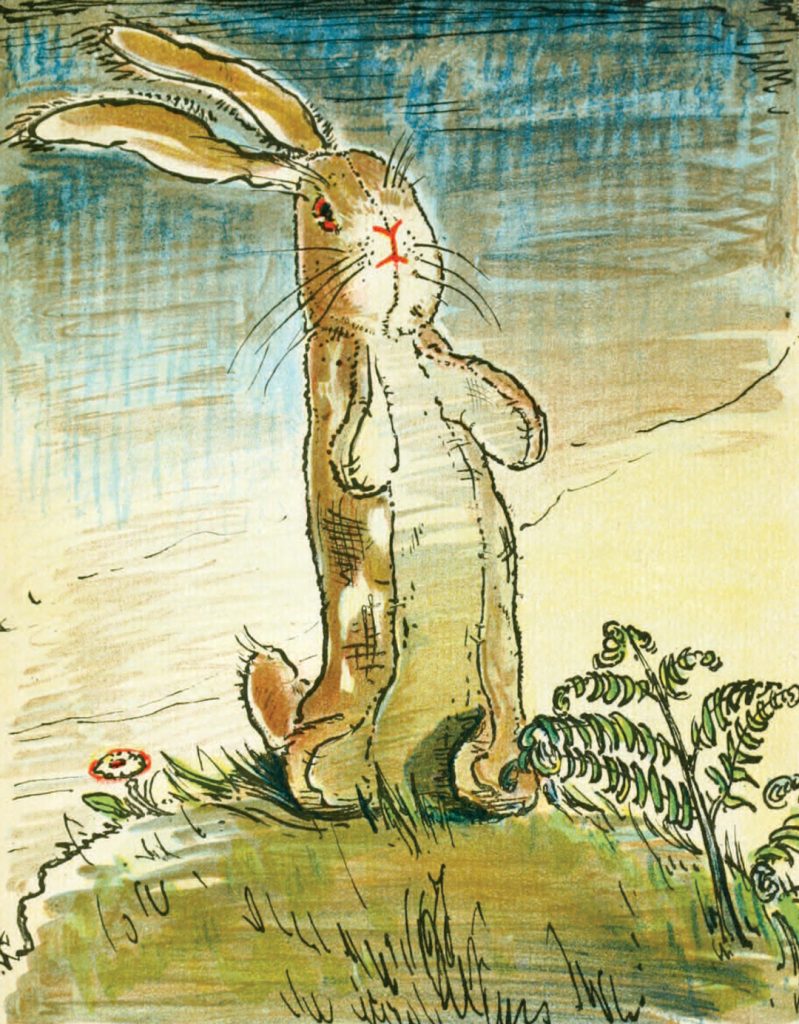
The Legacy of The Velveteen Rabbit
The book has never been out of print and has been brought to life by the vivid illustrations of many talented artists. It was recognised by the IRA/CBC Children’s Choice Award and, in 2007, was named one of the Teachers’ Top 100 Books for Children by the National Education Association.
A timeless tale of growth and inner beauty, The Velveteen Rabbit will forever serve as a reminder that true value cannot be found in material possessions or money, but is abundant in love.
‘Fanciful though it is, it is based on love and truth, and will strike a sympathetic note in the heart of every little child.’
– The Sunday School Times, 1926
Collector's Edition of The Velveteen Rabbit
This facsimile collector’s edition has been faithfully restored by Read & Co. Books with great care taken to preserve the enchanting original illustrations. Recapturing the magic of this beautiful tale, we have thoughtfully conserved Margery Williams’ lyrical words and William Nicholson’s artwork for the enjoyment of future readers, both old and young.

